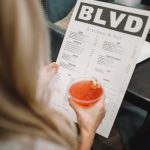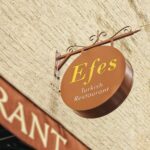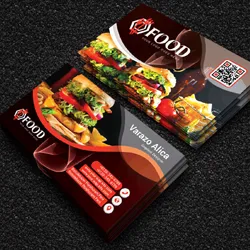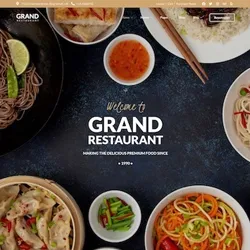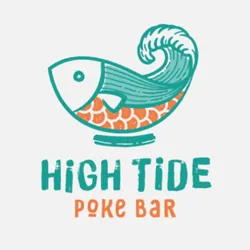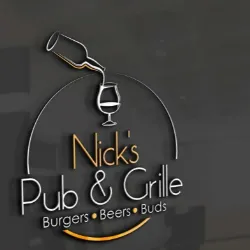You need to know how to design a menu that tempts customers to spend more. Like any business, restaurants try to sell more of their products. A restaurant cannot survive without money. They need to utilize the kind of trickery other enterprises use to cause customers to spend more. Here are some tricks on how to make a restaurant menu to convince customers to spend more money.
Ridiculous Adjectives

Avoid Using Dollar Signs

Most restaurants do not use dollar signs. When a customer sees dollar signs, they think of money. You want them to think of food, not money. Removing the dollar signs is a psychological trick that is quite effective. People are apt to buy something that does not remind them of the cost until it is ordered.
Number Trickery

A meal priced at $9.99 seems like a better bargain than one priced at $10. Using $9.95 works even better. Some restaurant chains use prices such as $9.85. When people surf prices, they see cheaper items and unconsciously want them more. High-end restaurants typically do not use this trick. People that go to an expensive restaurant know they will spend money.
Family Titles Entice Customers

What would you choose between chocolate chip cookies or Granny’s homemade chocolate chip cookies? Most people choose Granny’s cookies. When you connect cookies to the family by referring to them as ‘Granny’s,’ you invoke memories of your grandmother’s homemade cookies. Nostalgia causes people to try them. The trick is especially effective in Mom-and-Pop diners. Large fast-food chains do not use the technique often.
Use Ethnic Terms

Italian restaurants frequently use the trick. ‘Shrimp scampi tagliatelle’ sounds more authentic than ‘Shrimp spaghetti.’ Tagliatelle is Italian for noodles. Using ethnic language makes food seem more authentic.
Associate Products with Brand Names

An example of this trick is TGI Friday’s using Jack Daniels Barbecue Sauce. Whiskey fans are familiar with Jack Daniels and will likely enjoy a sauce made with it. People buy items that they have heard of previously.
Use Anchor Items

An anchor item is ridiculously expensive. Place it on the menu with other expensive items to make the other things seem to be a better value. Customers may choose a $20 steak over a $10 steak because they feel the more expensive item is better.
Put the $20 steak next to a $30 steak, and they may choose the $20 steak and see it as a bargain. When you put the $20 and $30 steak on the menu next to a $50 steak, the customers are likely to choose the $20 steak as the best deal. You trick customers into thinking an expensive item is a good deal because it is near a more expensive item.
Highlight Certain Items

Highlighting specific items is a trick low-end, and mid-range restaurants do all the time. You look at a menu to see what seems particularly tantalizing. Chinese menus have ‘chef specials’ listed separately from other dishes. They are often the most expensive. It is a ploy to get customers to think with their eyes rather than their wallets. Upscale restaurants feel things like this are a bit tacky.
Increase the Price of the Wine that is Second from Last in Cost

The thought behind this trick is that people who want to be frugal but not considered cheap will order the second least expensive wine. The wine still costs the restaurant owner the same, but now it seems like the worst deal on the menu.
Design Menus in a Unique Way to Prevent Comparing Prices

The worst design is a price list menu that puts prices on the right side of the menu where they are easy for customers to compare. Many restaurants, expensive ones, use fonts hard to read and put prices all over the menu. An excellent way of how to design a menu is by aligning the columns to the center. Customers read through the description to find the price. The distraction makes them more likely to choose an expensive item.
An Extension of Using Anchor Items

The same technique is used to employ another trick. Put the highest profit margin items next to anchor items. Customers avoid the anchor item because it is too expensive; they find things that seem better and make the most money for the restaurant.
Use Useless Language

When people say, ‘PIN number,’ they are using two things that mean the same. Restaurants do the same. A baked potato spud sounds more intriguing than a baked potato.
Organize Menus Based on Where Customers Look

Studies have shown people first look at the top right of a menu and the left side on the bottom last Many restaurants put their most expensive or anchor items at the top right. Cheaper items are generally in smaller text at the bottom left. They are on the worst section of the menu and harder to read, drawing attention to more expensive Items.
Use Boxes

The use of boxes can be a big deal. Restaurants highlight more expensive and high-profit items in decorative boxes that draw customers’ attention to them. It is a simple, effective premise. When browsing around a menu, any part with pretty colors and decorations will likely gain more attention than plain text sections.
Keep Portion Sizes Secret with Vague Language

This trick is referred to as bracketing. When you see regular salad and half salad or whole sandwich and half sandwich on a menu, you do not know how big they are but have a general idea. Half sizes are marked up to make full sizes seem to be a better deal. People spend more if they are dieting, while others order the full size thinking they got a bargain. All of this is accomplished without revealing the serving size.
‘First in Show’ Trick

Studies show people tend to pick the first choice in sections, such as appetizers, beef, chicken, a la carte, and so on. Restaurants put the most profitable items first. If the customer is the one who picks the first item on the list, you make the most money.
Conclusion
Restaurants have a high turnover. People who eat out at nice restaurants tend not to do so very often. Restaurant owners must learn how to make a restaurant menu that makes enough money to stay in business. It is not a terrible or evil plan, even if customers are aware of the tricks on how to design a menu.




